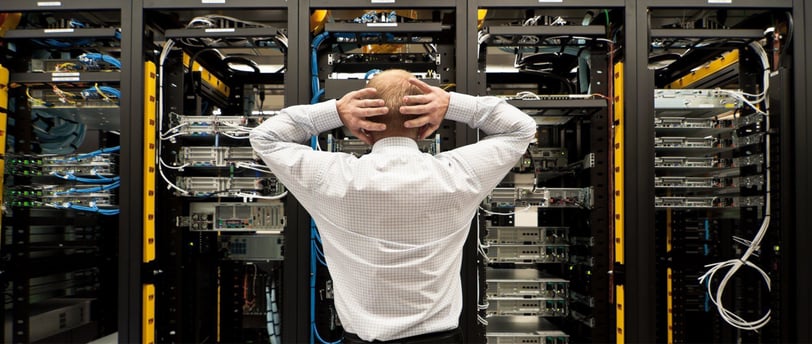Types of Data Centers: An Overview
2 min read


Data centers are the backbone of modern digital infrastructure, housing critical computing resources and serving various purposes. There are several types of data centers, each designed to meet specific needs and requirements. Let's explore the main types of data centers and their characteristics.
Enterprise Data Centers
Enterprise data centers are private facilities owned and operated by a single organization to support its internal IT needs. These data centers are custom-built to accommodate the company's unique applications and processes.
Key features:
- Located on-premises or off-site
- Managed by in-house IT departments
- Tailored to specific organizational needs
- Offer full control over infrastructure and data
Enterprise data centers are ideal for companies with specialized network requirements or those that can benefit from economies of scale.
Colocation Data Centers
Also known as multi-tenant data centers (MTDCs), colocation facilities allow multiple organizations to rent space for their computing hardware and infrastructure.
Characteristics:
- Shared facility with multiple tenants
- Provide power, cooling, and networking infrastructure
- Offer scalability and flexibility
- Reduce the need for in-house IT management
Colocation data centers are popular among businesses that lack space or resources to maintain their own data centers but require high availability and robust bandwidth.
Hyperscale Data Centers
Hyperscale data centers are massive facilities operated by large cloud service providers and internet companies.
Notable aspects:
- Enormous scale (50,000 to 1+ million square feet)
- House thousands of servers
- Support cloud computing and big data storage
- Operated by tech giants like Amazon, Google, and Microsoft
These facilities are designed to meet the extensive compute, storage, and networking needs of cloud providers and large internet companies.
Edge Data Centers
Edge data centers are smaller facilities located closer to end-users, designed to reduce latency and improve data processing speed.
Key features:
- Smaller footprint compared to traditional data centers
- Located near population centers or specific service areas
- Support IoT, real-time applications, and content delivery
- Reduce network congestion and improve user experience
Edge data centers are crucial for applications requiring low-latency communication, such as autonomous vehicles and augmented reality.
Modular Data Centers
Modular data centers are pre-fabricated, portable facilities that can be quickly deployed and scaled.
Characteristics:
- Containerized or prefabricated design
- Rapid deployment and scalability
- Suitable for temporary or permanent installations
- Ideal for remote locations or disaster recovery scenarios
These data centers offer flexibility and can be used to quickly expand capacity or provide computing resources in challenging environments.
Cloud Data Centers
Cloud data centers are facilities operated by cloud service providers to support their cloud computing services.
Key aspects:
- Support multi-tenant cloud services
- Offer virtualized resources
- Provide on-demand scalability
- Enable pay-as-you-go models for computing resources
Cloud data centers form the foundation of public cloud services, allowing businesses to access computing resources without owning and maintaining physical infrastructure.
In conclusion, the diverse types of data centers cater to a wide range of business needs, from small-scale edge computing to massive hyperscale facilities. Organizations can choose the most suitable data center type based on their requirements for scalability, control, cost-efficiency, and performance.
Get in touch with us
Let's find perfect real estate for your data center in Florida.
Northern & Central Florida
Jacksonville - orlando - tampa
andrey@datacenteragent.com
331-399-2365
© 2024. All rights reserved.
